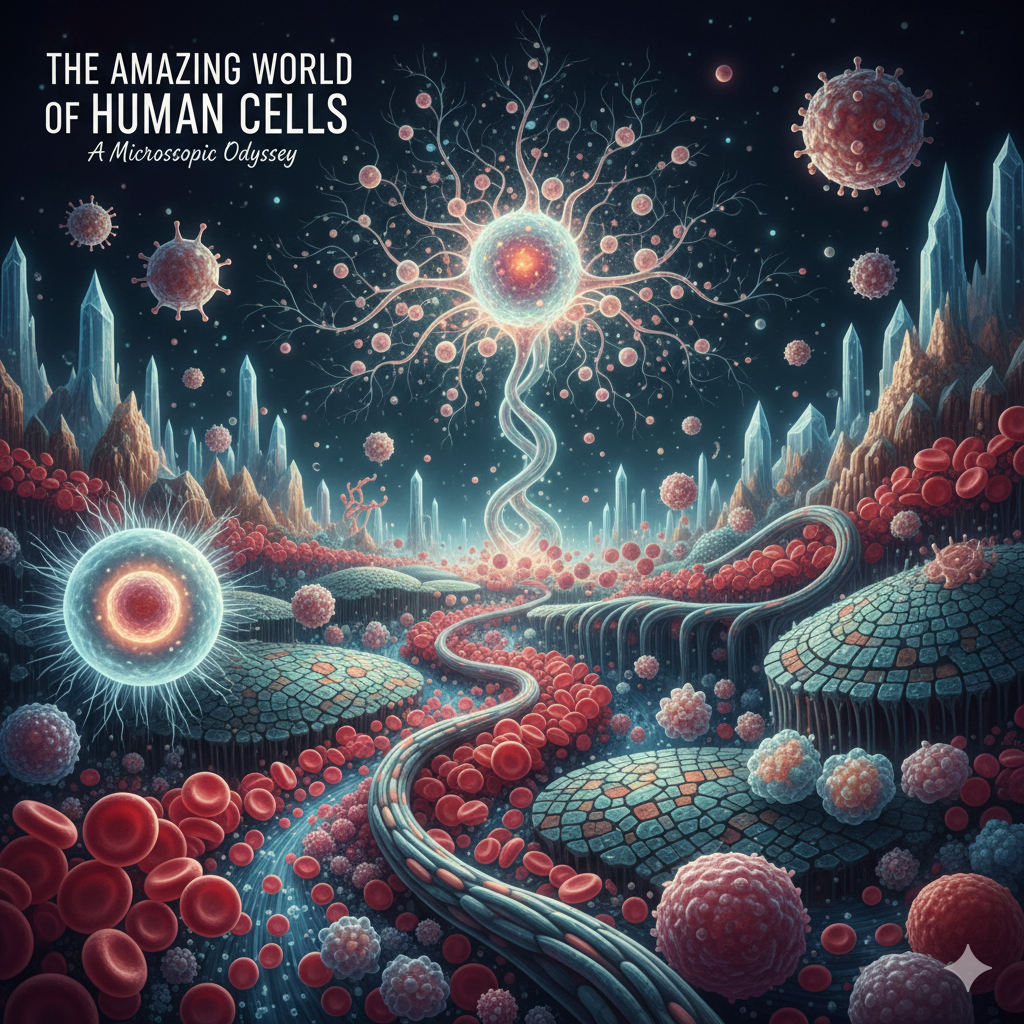
MR MOHAMED
 biology, human cells, genetics, life science
biology, human cells, genetics, life science
 0 comment
0 comment
 06 Oct, 2025
06 Oct, 2025

Cells are the fundamental units of life — every living organism, from the tiniest bacteria to the most complex human body, is built from these microscopic structures. Each cell acts like a miniature factory, carrying out countless processes that keep us alive every second of the day.
In this article, we will dive deep into the fascinating world of human cells. You’ll learn about the cell membrane, which acts as a protective barrier and controls what enters or leaves the cell. Inside, we find the nucleus — the control center — where our DNA is stored, carrying the genetic instructions that make each of us unique. Surrounding the nucleus are various organelles such as mitochondria, often called the “powerhouses” of the cell because they generate the energy needed for every function.
We will also explore how cells communicate with one another through chemical signals, forming tissues and organs that work together in perfect harmony. Understanding this communication helps explain how our bodies heal wounds, fight infections, and grow.
Finally, we’ll discuss how cells divide through processes like mitosis and meiosis, ensuring growth, repair, and reproduction. By studying these incredible systems, students can gain a deeper appreciation for biology — seeing that even the smallest components of life have a complex and intelligent design.
Cells may be invisible to the naked eye, but they represent one of the greatest wonders of science — the foundation of all living things and the key to understanding life itself.
MR MOHAMED
0 comment